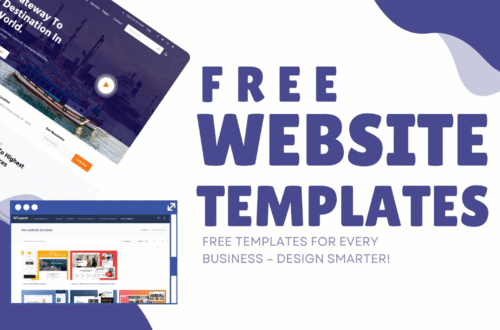In the modern classroom, where students are increasingly attuned to digital experiences, traditional lecture formats often fail to hold attention. Educators today are discovering the immense power of visual storytelling as a transformative teaching tool. By blending information with compelling visuals, they are not only making content more engaging but also improving retention, comprehension, and emotional connection with students. Slideshows, when designed thoughtfully, can become one of the most effective mediums for delivering this kind of impactful learning.
Why Visual Storytelling Matters in Education
Visual storytelling transcends language barriers, simplifies complex concepts, and appeals to multiple learning styles. Cognitive psychology supports the idea that humans process visuals 60,000 times faster than text. When a narrative is combined with relevant images, charts, and motion, it helps the brain make stronger associations. For students, this means improved understanding and long-term recall.
From primary school to higher education, the strategic use of visual narratives—such as slideshows—can clarify abstract ideas, humanize historical events, or bring scientific theories to life. A slide illustrating Newton’s laws with animations or one that depicts a historical timeline through visuals makes the lesson more tangible and memorable.
Structuring Slideshows for Maximum Impact
Creating a powerful slideshow is about more than choosing eye-catching images. It involves careful planning and alignment with the lesson objectives. Here are some key strategies:
- Start with a Story Arc: Just like in literature or film, a good slideshow should have a beginning, middle, and end. Introduce the problem or context, explore the core content, and conclude with key takeaways.
- Use Visual Anchors: Infographics, timelines, diagrams, and photos act as visual anchors that reinforce the information being presented. These help in sustaining attention and aiding memory.
- Minimize Text: Overloaded slides hinder learning. Instead of paragraphs, use keywords or short phrases supported by visuals and verbal explanations.
- Incorporate Interactivity: Embedding quizzes, polls, or short video clips within the slideshow keeps students engaged and encourages active participation.
- Consistent Visual Design: Using a unified color palette, typography, and layout helps maintain focus. Inconsistent slides can distract and reduce the effectiveness of the message.
Enhancing Digital Learning Experiences with Tools and Apps
Educators often face time constraints that make it challenging to create visually-rich content from scratch. This is where digital tools come in—especially those powered by artificial intelligence. They simplify design tasks, suggest layouts, and even curate visual assets, thereby saving hours of manual effort.
One platform that has gained popularity for its intuitive features is invideo AI, which offers an ai slideshow maker that assists educators in designing well-structured, visually dynamic presentations. By automating various elements—such as slide transitions, media selection, and design consistency—this tool allows teachers to focus more on the educational content rather than getting bogged down in formatting.
This approach has proven especially valuable in remote learning environments, where teachers must compete with numerous digital distractions. A visually appealing, well-paced slideshow can significantly improve student focus and interactivity.
Emotional Engagement and Retention Through Visuals
Visual storytelling isn’t just about information delivery—it’s also about forging emotional connections. When students are emotionally invested in the content, they are more likely to engage deeply and remember it for longer. A slideshow depicting real-life stories, student contributions, or culturally relevant themes can enhance empathy and inclusivity in the classroom.
This method is particularly effective in subjects such as literature, history, and social sciences, where context and emotion play a pivotal role in understanding. But even in STEM disciplines, visual storytelling aids in breaking down intimidating topics into digestible narratives, making learning more accessible to all.
The Role of Innovation in Multimedia Learning
The rapid evolution of educational technology continues to blur the lines between storytelling and instruction. Beyond slideshows, educators are increasingly using dynamic video formats to deliver content that is both informative and entertaining. These innovations are shaping the future of classrooms, especially in hybrid or fully online settings.
One such advancement is the ai generated video app, which enables educators to convert text-based lessons into animated explainer videos with minimal effort. By leveraging voice-overs, stock footage, and animations, these tools allow teachers to bring abstract content to life. They’re especially helpful in flipped classroom models, where students absorb content independently before engaging in discussion or problem-solving during class time.
Apps like these are revolutionizing the way teachers present complex ideas, allowing for deeper learning without requiring technical expertise. From science experiments to literary analyses, almost any subject can be enhanced with visual storytelling powered by AI.
Empowering Students to Become Storytellers
While much focus is placed on how teachers can use visual storytelling, it’s equally important to encourage students to become creators. Assignments that require students to build their own slideshows or short videos nurture creativity, communication skills, and digital literacy. When students tell stories through visuals, they learn to think critically, structure ideas logically, and express themselves more effectively.
Educators can foster this by integrating media creation into their curriculum. For example, instead of writing a traditional book report, a student might create a visual summary of a novel, highlighting character arcs and themes through slides or a video. Such assignments promote active learning and help students internalize content more thoroughly.
Final Thoughts
Visual storytelling holds transformative potential in the realm of education. By combining the structure of traditional pedagogy with the engagement of modern multimedia, educators can create immersive, meaningful learning experiences that resonate with students of all ages. As digital tools become more accessible and intelligent, they offer powerful support in designing content that’s not only educational but also emotionally compelling and memorable.
Ultimately, the success of visual storytelling in education lies not in the complexity of the tools used but in the intention behind their application. Whether through a beautifully crafted slideshow or a captivating student-made video, the aim remains the same: to spark curiosity, deepen understanding, and foster a lifelong love of learning.





